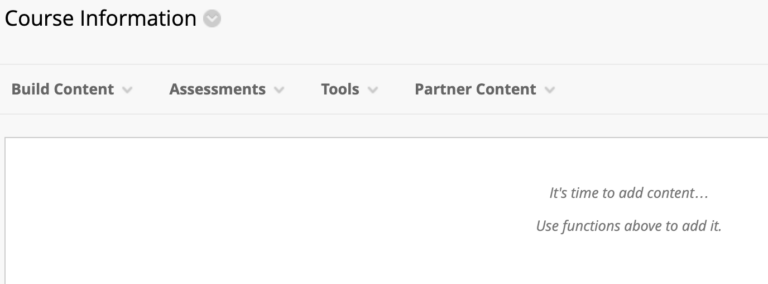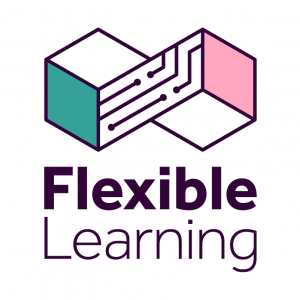
For more information, please visit the Flexible Learning Programme’s Digital Learning Environment Project – to see where we’re up to and what will be the next steps.
Canvas: What you can do to prepare
As a university, we are all saying goodbye to Blackboard and welcoming Canvas as our new Central Learning Environment for the academic year of 2025. We are introducing Canvas to teams across the University, but if you do not have access to Canvas yet you may have been wondering about what you can do to help prepare yourself for this change.
Here are two key activities that can kick off your Canvas journey and get you ready and prepped to move your materials over. Please take time to look through the following and keep up to date with communications from the Humanities eLearning Team.
-
1) A Blackboard spring clean
What?
We are starting to test the best method for migrating content from Blackboard to Canvas. No method available will be fool proof and it’s likely that any method will require a significant amount of reorganisation or amalgamation of information. Some content will simply have to be recreated in a format more suited to Canvas. The difference between the two systems is significant and deciding whether ‘fixing’ imported things is quicker than recreating them from scratch is a key priority in deciding what is the most efficient way of approaching this.
One thing is certain though, having a clear understanding of what is in your Blackboard unit space is going to make your life easier. A well-structured, clearly labelled Blackboard space will provide a much better foundation from which to build on and lead to a more effective use of your time.
Why?
The phrase ‘spring clean’ may conjure visions of physical spaces, decluttered and well-aired. While you may not associate digital spaces with spring cleans, digital spaces rely on servers built out of real materials, often in water guzzling, greenhouse gas-emitting hyper-scale data centres.
There is little that is clean or green about any of this physical infrastructure. As our university relies on digital space, it’s important to consider the sustainability of our energy consumption.
Take a look at what Kelly Widdicks and Daniel Pargman are expressing here about changing relationships in digital technology consumption:
In recognition of the socio-environmental issues of digital tech there is a growing emphasis on digital ‘sobriety’ where actions are taken to clean up our digital environmental footprint. It challenges ‘more is more’ assumptions underpinning digital technology design, e.g. that all digital artefacts can remain in an ever-bloating digital cloud. Priest et al (2016) sees these assumptions as part of a ‘cornucopian paradigm’ which assumes ever growing digital consumption on a planet of infinite resources.
An alternate ‘computing within limits’ paradigm is characterised by the sustainable design and mindful use of digital resources. It requires significant design changes at a systems-wide level. It also benefits from the development of the same habits of care we would use in physical spaces.
Widdicks, K., & Pargman, D. (2019, June). Breaking the Cornucopian Paradigm: Towards moderate internet use in everyday life. In Proceedings of the Fifth Workshop on Computing within Limits (pp. 1-8).
If you would like to explore what computing within limits might mean in a University context, then you may be interested in the Digital Sustainability Group (MIE). We explore the ways in which digital technology use, digital learning design and procurement can work towards computing within limits. You can contact Amanda Banks-Gatenby or Susan Brown for further information.
– Digital Sustainability Group
This is especially relevant for our work at the university as we have made a pledge towards sustainability in our working and teaching practices. Our Sustainable Future, the University’s Environmental Sustainability Strategy 2023-28, outlines how we plan to promote sustainability in our teaching and learning, and reduce our negative environmental operational impact. You can read more about this here.
How?
By deleting old and unused content, and generally keeping a tidy ship, you can improve the environmental sustainability of your teaching, and make the jump to Canvas easier. If you know what and where your useful files are, you will have a clear understanding of what is in your Blackboard unit space and therefore moving to Canvas will be quick and simple.
Many Blackboard unit spaces contain content that is no longer used in the unit. This may be previous versions of assessment submission information, folders of content relating to how the unit was delivered during the pandemic or information used by previous unit leads that is being kept ‘just in case‘. If this content us no longer being used, there is no point migrating it to Canvas, it should now be deleted or downloaded (or both).

This item in Blackboard has not been available to students since 2021 – it could be deleted if it’s no longer in use.
Deleting unused folders and menu items
If you find folders within your course unit that are currently empty – decide whether they can now be deleted or not.
Over the years many unit leads have added to the ‘black’ side-menu in Blackboard which was pre-populated with items as part of the Blackboard template. It’s now not uncommon to see side menu items becoming redundant and have no content within them, the same for folders in the content areas. these folders and menu items are the shells of course structures no longer in use, they can now be deleted.

This is an empty folder in Blackboard, if it’s not being used, the folder should be deleted pre-migration to Canvas.
Video files
For several years we have advised that video content should be first uploaded to the Video portal and then embedded within Blackboard. Accessing video that has been directly uploaded to Blackboard provides a suboptimal student experience. We anticipate that Video files will NOT be migrated across from Blackboard into Canvas, so video directly uploaded to Blackboard will need to be transferred over to the video portal in advance of the migration or added directly to Canvas Studio during the migration.
Canvas Studio offers some quite exciting solutions to recording and using video content within your courses – but more on that later in the year!
Quizzes and pools
We are still unsure how the migration of quizzes will happen. But happily, Blackboard does use a standardised framework, so common question formats like Multiple Choice Question should transfer well. However, it is anticipated that questions that use randomisation and number calculation may need some attention after auto migration – this may range from amending the question to rewriting it from scratch. Some of the more unusual question types – such as Hotspot, Quizbowl – may also not migrate due to Canvas not having a like-for-like question type. At this stage we recommend that staff take stock of the range of questions they have in use. It may be that more complex questions require a one-to-one level of support to recreate and this should be factored into your Canvas development time.
Non-Deployed files
Non-Deployed files are files uploaded to the file store of a Blackboard unit without a link from the student-facing portion of Blackboard. The current understanding is that ONLY content linked within the front end of Blackboard (whether hidden or not) will be part of the auto-migration process. Any files not deployed (or linked) that sit within the Files area of Blackboard will not be auto-migrated.
- There is currently no need to ‘spring clean’ the Files section of Blackboard as old/unused content will not be copied over to Canvas
- Any content NOT deployed in Blackboard but STILL REQUIRED should be downloaded and stored on your machine as you will no longer have access to Blackboard after September 2025
- 2) Add Alt (Alternative) text to images in Blackboard
What?
While it may seem small, alt-text is hugely important to our work as a university. Alternative text (alt text) is a brief caption or paragraph that describes the content of your images. Alt text should convey the context and purpose of an image, describing key elements and meaning in a way every user can understand. This ensures that users with visual impairments receive the same value from the image as a sighted user.
Why?
Not only is it legally required to meet national accessibility standards (https://www.w3.org/WAI/standards-guidelines/#wcag2), but Canvas requires images to have alt text when they are uploaded. By practicing writing alt-text now, you can build up a library of descriptions for images you use in your teaching and develop your alt-text writing skills.
How?
There is information – including about training sessions – here on the Humanities Teaching Academy.
More information about how the University is making its web content accessible can be found via the Web Accessibility Guidelines on StaffNet. If you’d like more help and guidance please contact your eLearning team.
Spring clean guidance adapted with permission from FSE eLearning:
https://www.elearning.fse.manchester.ac.uk/fseta/blackboard-spring-clean/

